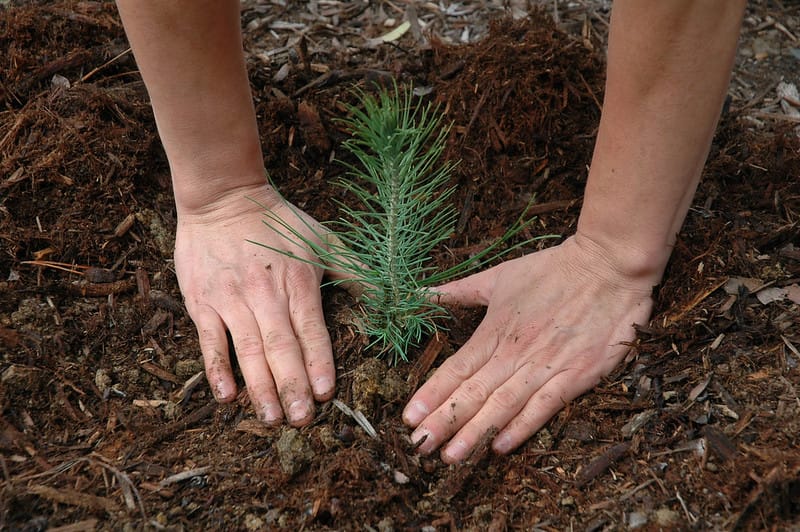If you’re thinking about planting a tree, you’re usually thinking “I wish I would’ve planted this years ago!” or “It would be really nice to have a big tree now.” The next logical idea that tends to pop up is “I should buy a bigger tree so that I can save that time I missed!” The reality is that you can’t make up for lost time when it comes to trees and planting bigger doesn’t accomplish what you think it does.
Why Should I Plant Smaller Trees?
While planting a bigger tree looks significantly better after planting, you’ll get the same size tree in as soon as 3 years (varies by species) if you plant a smaller tree. Not only will that smaller tree be significantly cheaper, but it will result in a healthier tree that will out pace the larger tree for years afterwards. Larger trees have a much more difficult time establishing in the landscape, which is a major reason that they don’t grow quickly after planting. Other reasons to plant a smaller tree include:
- Faster growth initially and long term
- Faster recovery from transplant shock
- Less time spent in a bucket, therefore less circling roots
- Pruning from nursery production hasn’t destroyed the natural growth form and leader of the tree
- Quicker establishment, resumes its optimal growth rate sooner
- You can plant more of them for less money
- Easier to handle and plant, requiring a much smaller hole
- They attain drought tolerance much sooner than large trees
- Don’t need staking and won’t blow over
What Does The Research Say?
In this study, “Differential Environments Influence Initial Transplant Establishment Among Tree Species Produced in Five Container Sizes”: 42(3): 170-180, it was shown that trees grown in #1 (0.73 gallons) and #3 (2.25 gallons) containers had the best post-transplant growth in comparison to #25 (25.14 gallons) and #45 (42.81 gallons) containers. In a presentation given post research, Dr. Arnold later explained at the annual International Society of Arboriculture meeting in Fort Worth, Texas (August 2016) that the chaste tree (one of the species used in the study) originally in a #1 container caught up to the size of the chaste tree that was originally in a #45 container in 3 years!
Doris Taylor, the plant clinic manager at The Morton Arboretum in Lisle made the following comments that support the idea of planting small:
“It may seem that you’ll get a large tree faster by starting with a large tree,” Taylor says, “but that’s rarely the case.” There’s no instant gratification with trees, but a smaller tree can offer faster gratification.”
“A large tree is much more costly and less likely to thrive. A smaller, younger tree will be more resilient and more vigorous.”
For a look at a real life example you can refer to this blog post showing a smaller tree outpace a larger tree with photos of them after 9 years. All of the information isn’t completely accurate, but the photos are a great example of the difference.
Why Isn’t Everyone Doing It?
Why isn’t everyone planting small trees if it is so great and such a good idea?
- Availability. As a businessman, I understand that putting a small tree in a 5 gallon bucket and waiting a few months can get you $35 instead of $10. Due to this you run into problems when looking for 10 1 gallon trees. If a nursery does sell small trees, they tend to be selling wholesale in large quantities.
- Production process of some trees. Some tree that are grafted need to have time to grow and have the graft take successfully. It is common to order grafted ornamental trees that are easily a 5 gallon size (3-4′ tall) upon receiving them bare root. This doesn’t lend to selling small trees.
- Patience. Many people want it now and they assume that buying a bigger tree will give it to them sooner despite a thorough explanation that it won’t. The reality is there is no instant gratification in trees, they take time.
- Lack of understanding. If everyone understood this reality I think more people would plant small. Between lack of understanding and lack of availability, this keeps us from planting in a way that is best for all involved.
Let us increase the demand for small trees and plant them in a way that is best for them (and us!) going forward.

